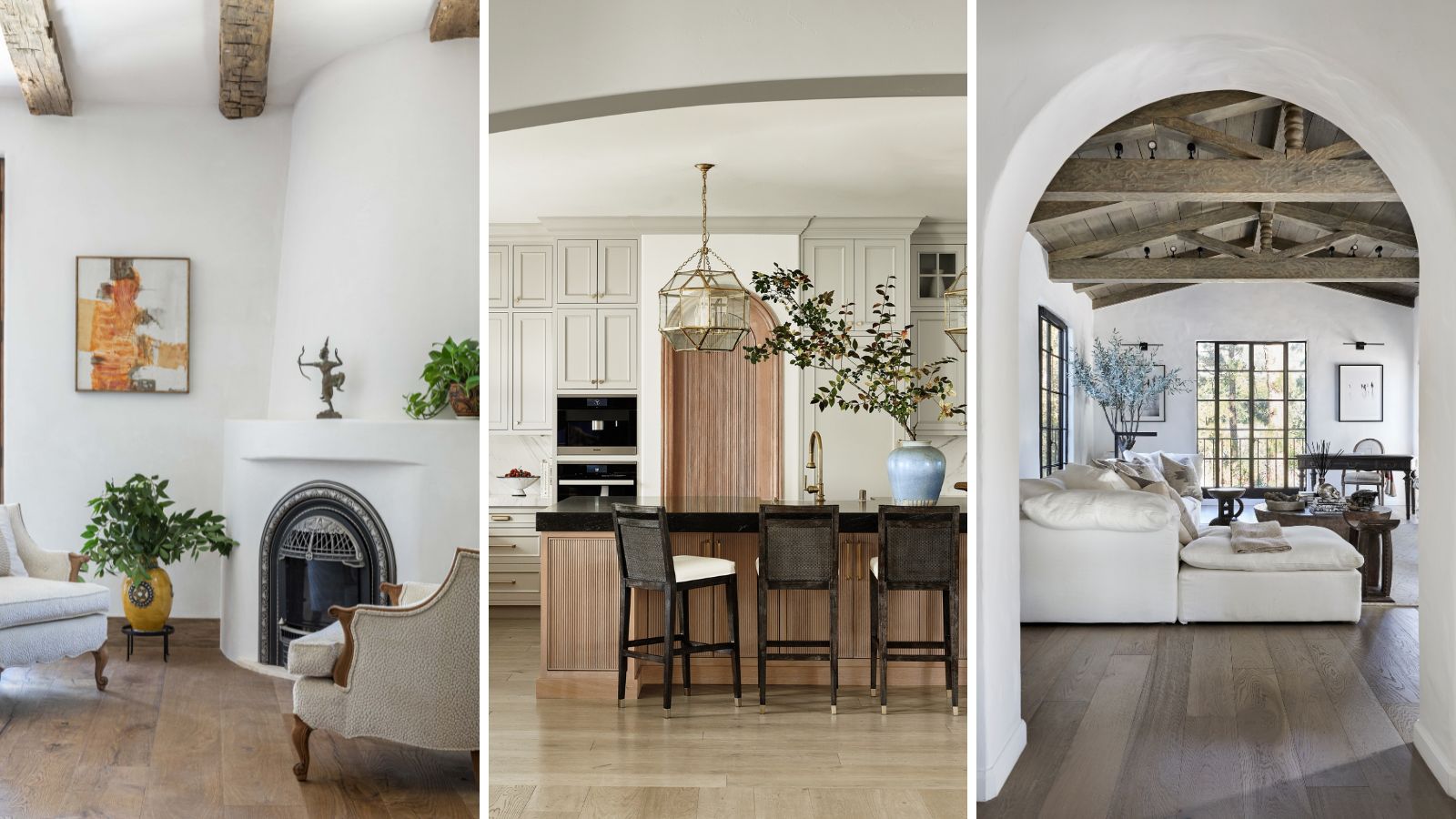
Think of Spanish-style homes and you'll picture rustic stone or dazzling white stucco walls, red-tiled roofs, arched doorways, fancy ironwork and wooden beams. These are the familiar hallmarks of Spanish-style house design and architecture.
We're using the term to encompass all Spanish-inspired homes but it's helpful to understand the origins of these ever-popular architectural styles.
What are the characteristics of Spanish-style homes?
First, let's look at Spanish colonial style. This originated in Spain around 1500, and arrived in North America with the Spanish settlers in the 1600s. They built new houses in Florida, California and the Southwestern states to replicate those they'd left behind in Europe. They used similar materials to those used in Spain for millennia: clay and straw for the walls, with a stucco finish and clay roof tiles.
Spanish colonial style endured in America until the mid-1800s only to reappear as part of the Colonial Revival movement in the early 1900s. A building boom of Spanish revival homes sprang up, all with instant curb appeal. These low-roofed, white rendered or stone buildings were luxurious but had a simplicity of line grounded in their humble origins in rural Spain.
Perhaps it's that dichotomy of style that gives them universal and lasting appeal but whatever the reason, we continue to this day to build and enjoy Spanish colonial, Spanish revival and modern Spanish interiors.
Take a look at some of our favorite Spanish-inspired living spaces below, showcasing the key elements of Spanish style and interior design.
1. Enjoy the beauty of natural stone exteriors
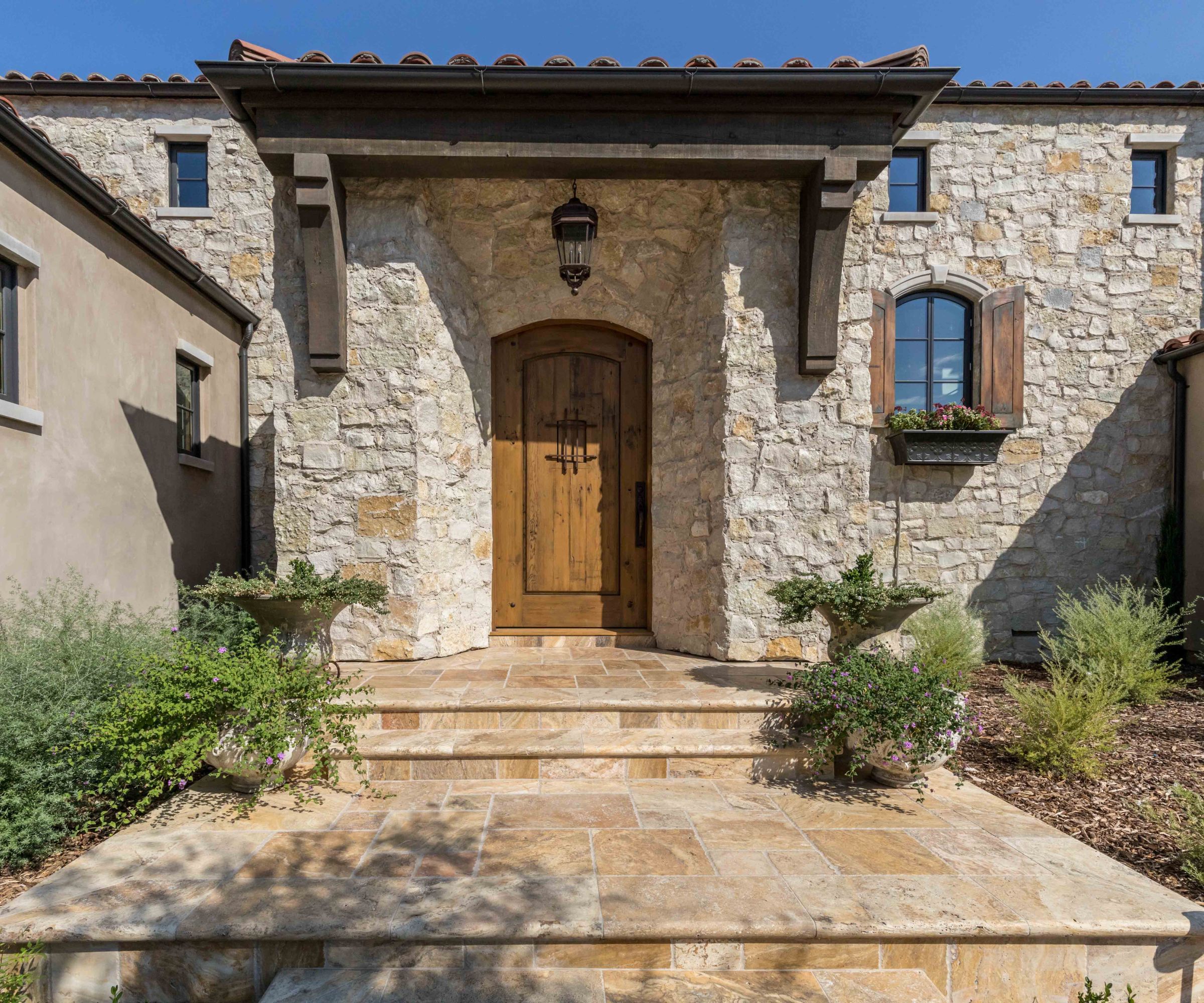
Spanish settlers in Florida, California, New Mexico and Arizona used local materials to build their homes with regional variations. Adobe (a mix of clay and straw) faced with stucco was one option for the walls, but local stone or a mix of both were also often seen.
This modern revival home in Northern California was built from scratch in 2022 and its rustic stone construction wouldn't look out of place in rural Spain.
Interior designer Nastassja Bowman of Kristen Elizabeth Designs, who designed the property, explains the thinking behind this new build, and its style origins: 'The stone exterior is meant to almost blend in with the landscape, as the Spanish style is to let nature take the forefront,' she says. 'On the coast, the blue waters are the star of the show, and communing with nature is a Spanish cultural necessity. Protecting from the heat is also critical and the stone was traditionally a way to do that. Stone is a sure way to emphasize the Spanish style on the exterior of the home. I love the inconsistency of pattern and the texture it adds to an otherwise neutral scheme.'
Other key architectural details to note are the small windows (to keep the heat out), the low-pitched, clay-tiled roof and arched window and door details. All these elements firmly root this new build in Spanish revival style.
2. Add interest with embellished ironwork details
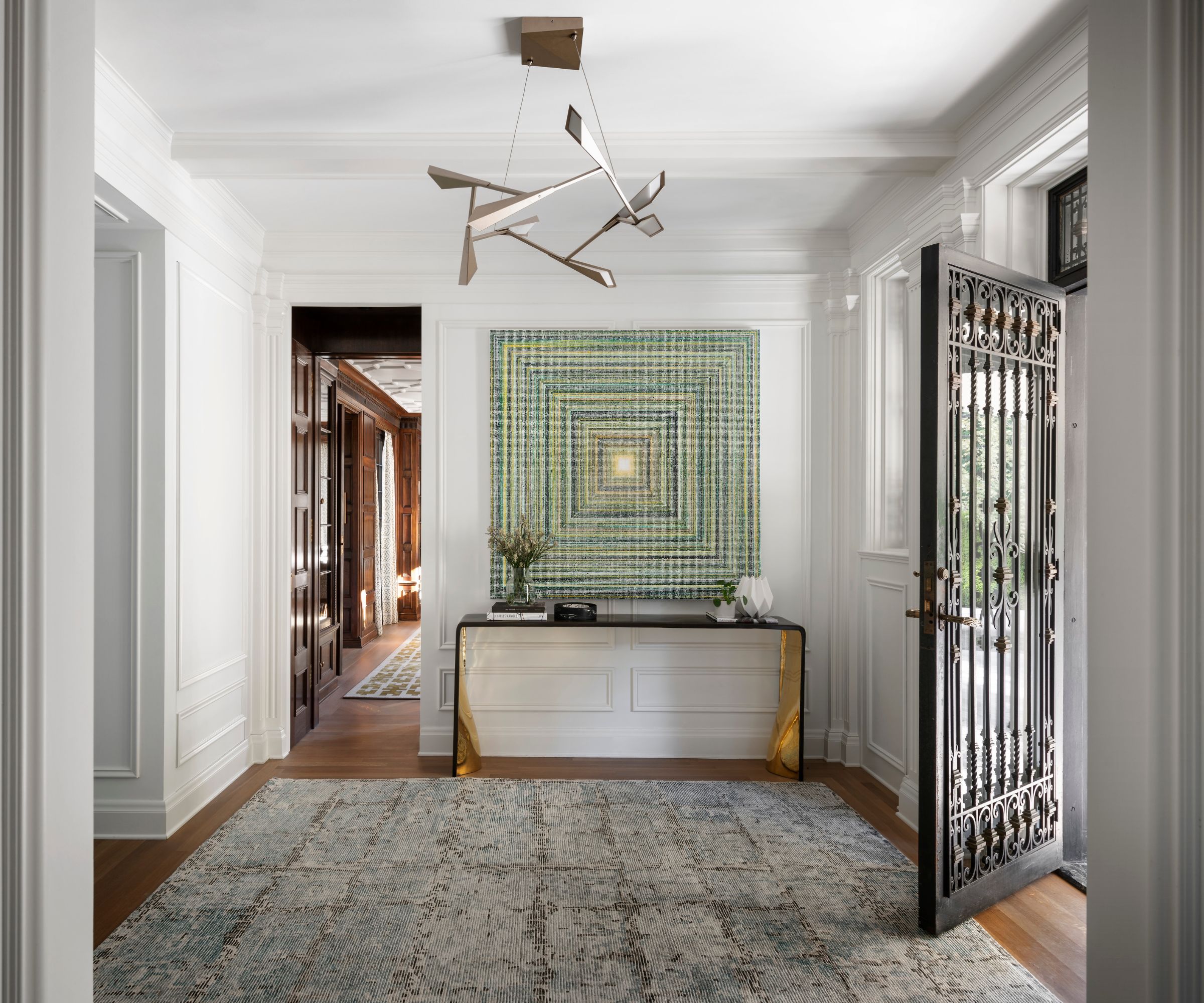
It's all in the details... If the exteriors of 1920s Spanish revival homes seemed simple, look a little closer and there are plenty of decorative details. These might take the form of Juliet balconies on upper floor windows (there were only ever two stories), or fancy iron window or door grills. These would carry with them all the tradition of a centuries-old craft, giving the home a humble, rural look.
That simplicity of style might continue inside the home. 'Influenced by Italian and Spanish stylistic revivals in the roaring twenties, the Mediterranean Revival style allowed modulation between simplified interiors of Spanish with the more elaborate Italianate style,' says Aaron Mollick, co-founder of Studio AM who renovated the 1910 Spanish revival home pictured above. The original service areas of the house were opened up to enlarge the entryway and the front door was replaced but the ironwork door grill is very much in the decorative style of the era.
3. Fall for rustic ceiling beams and arched doorways
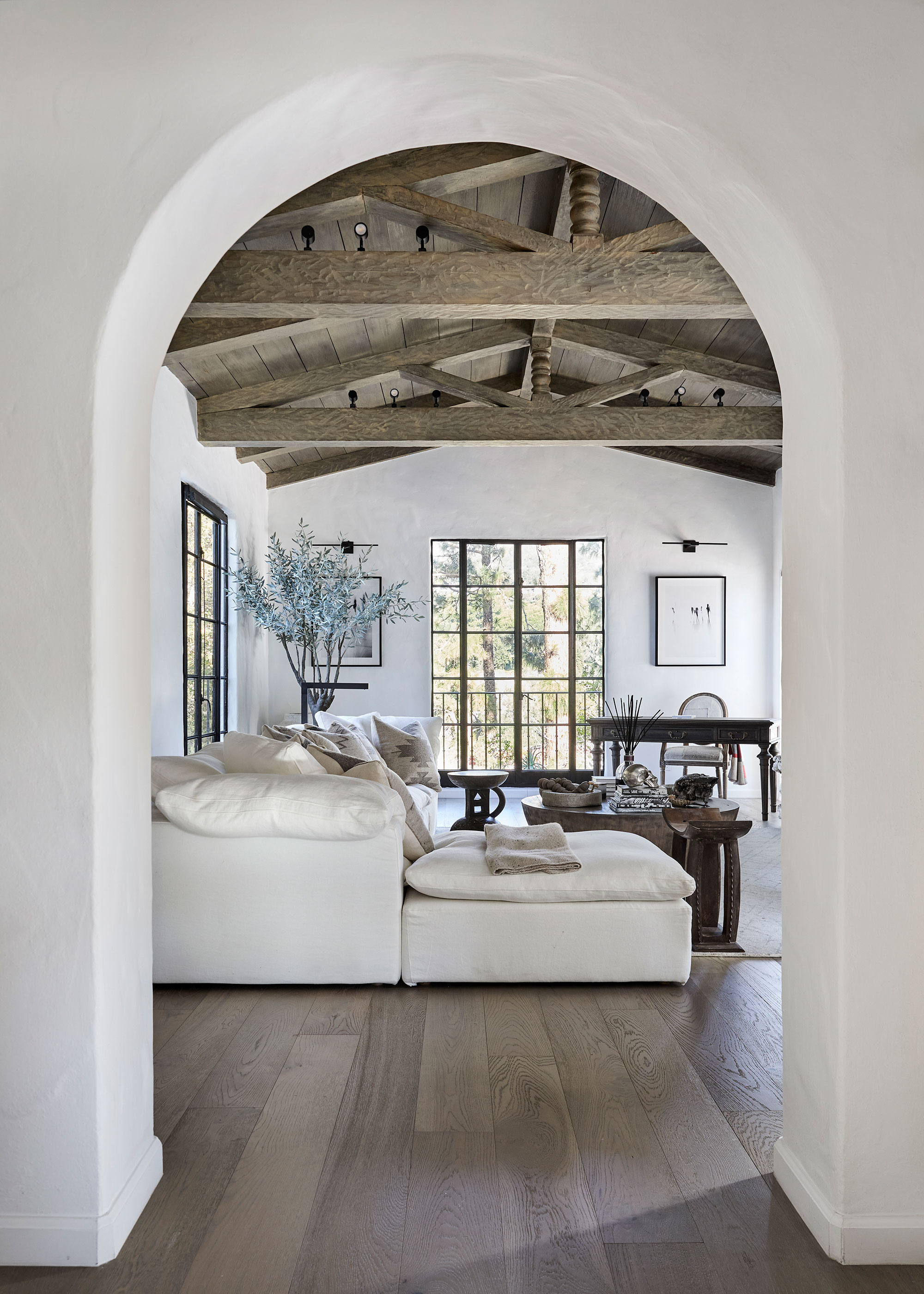
Everything about this Spanish-style living room is inviting. From the classic arched doorway that offers a warm welcome, right up to the exposed wooden ceiling beams, this is a room that makes you want to stay a while and relax.
Designer Julia Dempster, who owned and renovated the 1927 property, explains the room's unique appeal: 'The hallmark of the living area lies in its meticulous attention to detail, where every element has been curated to evoke a sense of nostalgia and sophistication,' says Julia. 'The white washed walls bathed in natural light, provide a serene backdrop for the room's timeless beauty. They serve as a canvas upon which the richness of the timber ceiling and wide oak plank floor can truly shine. The high timber ceiling, with its intricate patterns and warm hues, adds a touch of grandeur to the space.
'As sunlight filters through the black steel windows, casting dancing shadows across the ceiling, a sense of tranquility permeates the room. Complementing the timber ceiling are the neutral textiles and the accents of reclaimed wood furniture. My favourite item in the room is the olive tree which adds contrast and brings the outside in,' she adds.
4. Capture the essence of Spanish revival style in a new-build kitchen
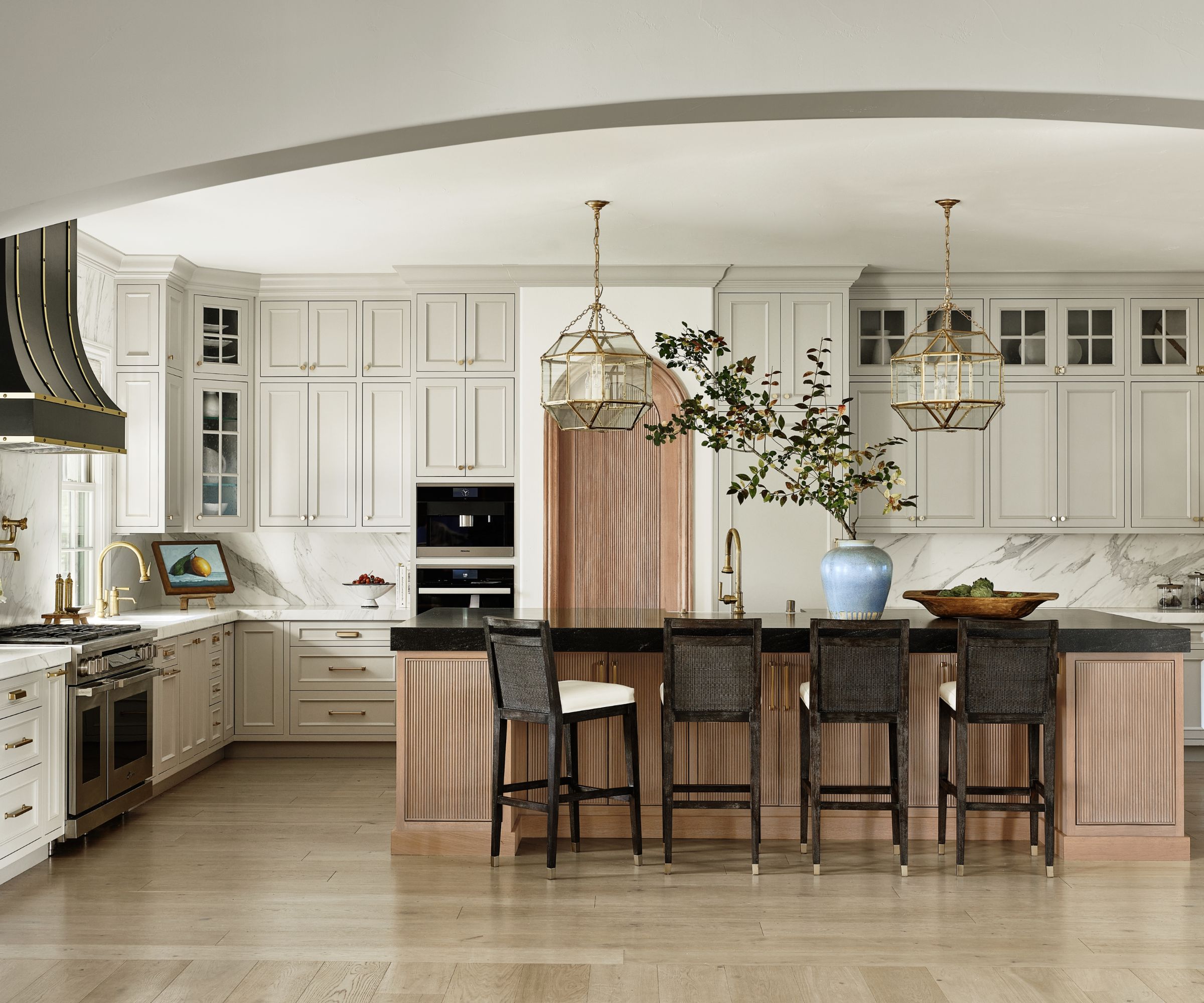
It's perfectly possible, as we've seen, to pick out the key elements of Spanish colonial or revival style and incorporate them in a new-build. This can work particularly well in a kitchen, especially since we tend to associate relaxed cooking and entertaining for friends and extended family with the Spanish or Mediterranean culture.
The smart kitchen ideas showcased here are at the heart of a recent renovation and redesign of a 2018-built home in Danville, CA. Retaining the classic arched opening, typical of Spanish-style homes, designer Lauren Evans introduced a modern interpretation of the look.
'While this kitchen is not of Spanish design specifically, it does complement that aesthetic nicely and gives the light, warm and elegant feel my clients wanted to pair with the Spanish bones of the home,' explains designer Lauren. 'We wanted to lean into white and black tones reminiscent of so many Spanish Colonial white-painted homes (to reflect the sun) and the dark contrast of dark rustic building materials. We added the warm greige cabinetry paint, brass finishes and light oak wood to soften the sharp hues. The distressed stools match the beams in the adjacent room and the glass and brass lanterns for lighting adds modern character and charm, just the blend the clients were after.'
We explore more Spanish-style kitchen ideas in our dedicated feature.
5. Embrace traditional Spanish style with a dark wood kitchen
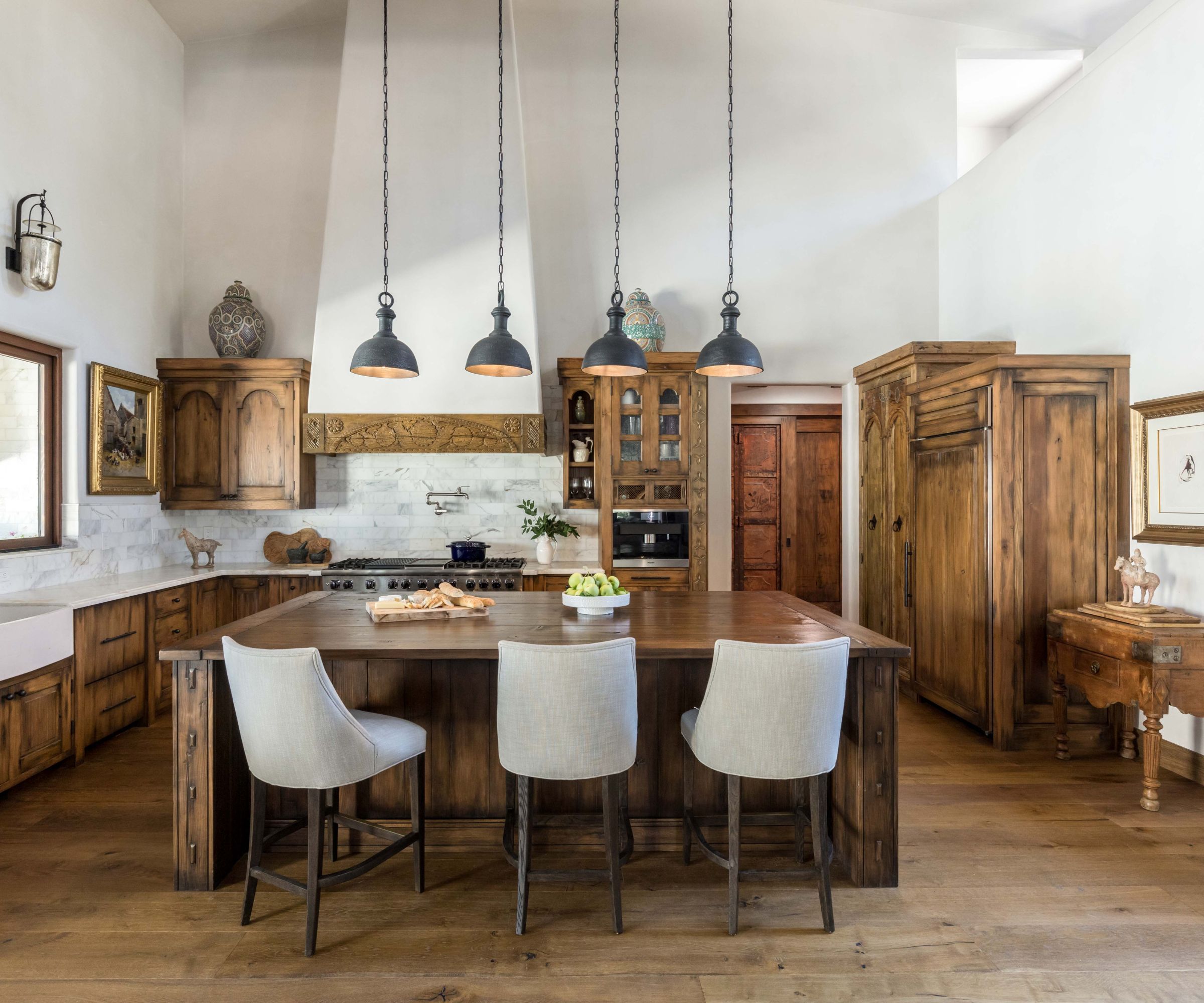
Although it's part of another new-build home, this kitchen is straight out of the traditional Spanish playbook, where dark wood kitchen cabinets and flooring pair with white walls and a plaster cooker hood. It's not hard to imagine platefuls of classic dishes being served up from that central kitchen island.
'The Spanish style here starts with the walls,' says Nastassja Bowman of Kristen Elizabeth Designs who designed the space. 'The creamy white and smooth natural textures of the walls mimic the Spanish mission style and provide a blank canvas for the rich and intricate woodwork to stand out. The warm worn wood tones create that rustic feel and emulate the craftsmanship that is prevalent in Spanish architecture. The hammered iron metalwork emphasizes the natural elements used to create the Spanish style. This style works well in areas where natural elements are abundant, where the environment can be reflected in the interior of the home.'
'Recreate this style by using handcrafted pieces made by skilled craftspeople, who give pieces that warm touch,' adds Nastassja. 'The small variations and inconsistencies give pieces character. That is what I love about Spanish style, it is so obvious there is a human element involved in its creation, and that, in itself, adds an inviting feeling.'
6. Get ahead of the curve with a cozy fireplace nook
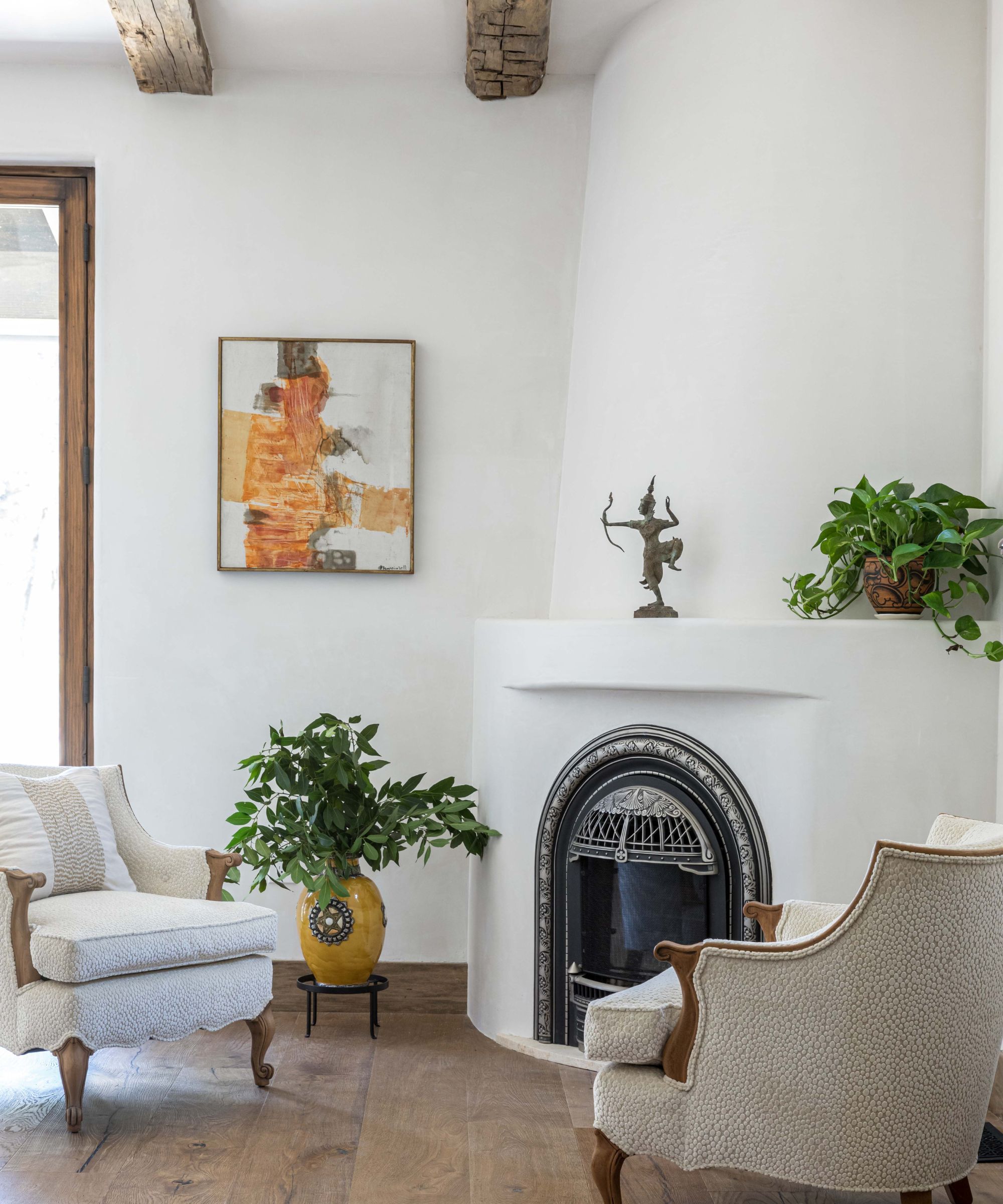
Highlighting another frequent theme of Spanish inspired interiors, this inviting family room seating nook has been created in front of an iconic curved fireplace and chimney breast.
'This curved plastered fireplace reflects Spanish style by recreating the arched shape that is so often used in Spanish architecture,' says designer Nastassja Bowman. 'From doorways to exterior shapes, the soft curve is a Spanish staple and the consistency of reusing the same material reiterates the abundance of the materials that originally existed to create Spanish homes.'
But it's about much more than materials and shape. This is a cultural symbol, too, as Nastassja explains: 'I love that this cozy space represents an important part of what makes Spanish design so well-loved, in that it is centered around community and people. This is yet another place where families, usually large families can gather and talk and enjoy each others' company,' she adds.
7. Tile in style – with color, pattern and sun-kissed terracotta
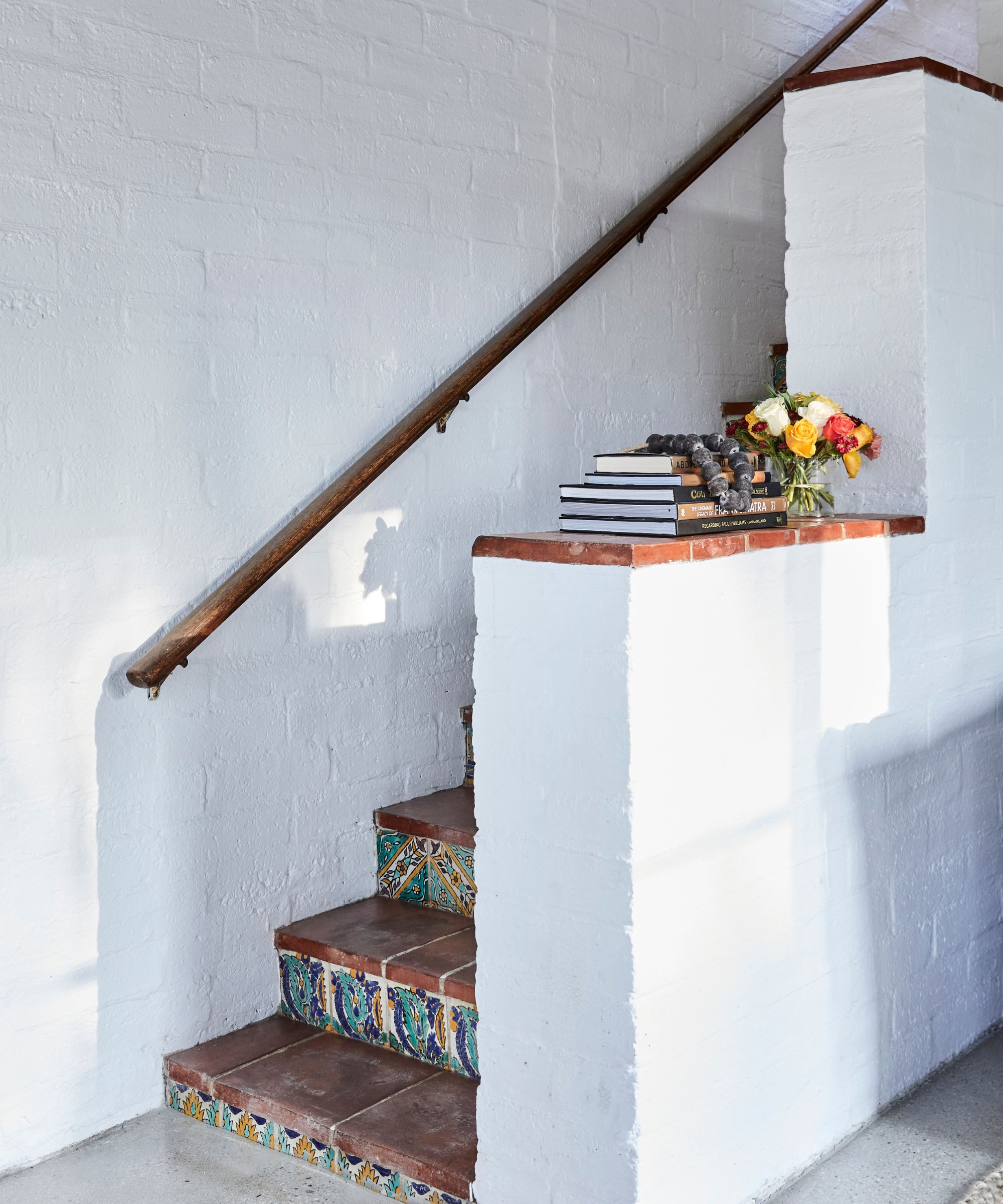
Spanish-style interiors know how to display decorative tiles to their best advantage. Take this stunning stairway in a 1927 colonial-style home. Its simple whitewashed walls and dark wood handrail are the perfect complement to the patterned tiles. Owned and renovated by designer Julia Dempster, the house in LA's Pacific Pallisades was a true labor of love.
'Through meticulous restoration efforts, its original tiles and brickwork, coupled with terracotta glazed tiles, have been lovingly brought back to life, honoring the heritage of its design and era,' says Julia. 'Each tile tells a story of craftsmanship and tradition, its glazed finish reflecting the interplay of light and shadow.'
Simple but effective, and natural but quietly decorative: these are the details that define Spanish style.
For more chic, European-inspired interiors, we explore, what is modern Mediterranean interior design, in our dedicated feature.







